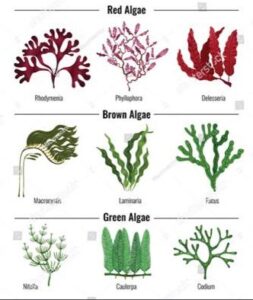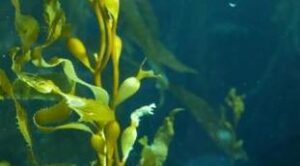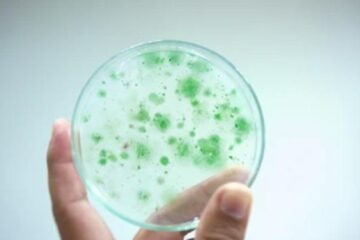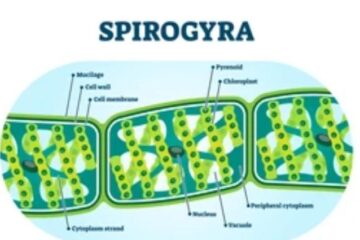Introduction
In the vast tapestry of life on Earth, algae are often overlooked, overshadowed by more prominent organisms. However, these unsung heroes play a crucial role in shaping our planet and sustaining countless ecosystems. Algae, a diverse group of photosynthetic organisms, hold within them a wealth of biological marvels that are both fascinating and essential for life as we know it. In this article, we will delve into the captivating world of algae, exploring their unique features, ecological significance, and remarkable adaptations.

Definition
Algae, a term derived from the Latin word “alga” meaning seaweed, refer to a group of photosynthetic organisms that lack complex structures found in plants. They belong to the kingdom Protista and comprise various taxonomic groups, including green algae, red algae, brown algae, diatoms, and cyanobacteria. Algae can be found in diverse habitats, from freshwater bodies to the depths of the ocean, and even on land.
Photosynthetic Powerhouses
One of the defining characteristics of algae is their ability to perform photosynthesis. Like plants, algae utilize chlorophyll and other pigments to capture sunlight energy, converting carbon dioxide and water into organic compounds. This process not only allows algae to produce their own food but also plays a vital role in global carbon cycling and the production of oxygen.
Diversity and Adaptations
Algae exhibit an astonishing diversity, both in terms of their forms and adaptations. From microscopic unicellular species to large multicellular seaweeds, algae come in a wide range of shapes, sizes, and colors. Some algae, such as diatoms, have intricate glass-like cell walls, while others, like seaweeds, possess specialized structures for attachment to substrates.
Algae are masters of adaptation, thriving in diverse environments and surviving harsh conditions. They have evolved unique adaptations to cope with fluctuations in temperature, light intensity, salinity, and nutrient availability. Some algae can tolerate extreme temperatures, high salinity, or low nutrient levels, showcasing their resilience and ability to colonize challenging habitats.
Ecological Significance
Algae play a vital ecological role as primary producers. They form the base of food chains, providing nutrition for a wide range of organisms, including herbivores, grazers, and filter feeders. Algal blooms, though sometimes harmful, serve as critical sources of food and energy for various marine creatures. Additionally, algae contribute significantly to the production of oxygen and the regulation of atmospheric carbon dioxide levels, playing a crucial role in global biogeochemical cycles.
Applications and Benefits
Beyond their ecological importance, algae have practical applications in various fields. They are used as a source of food and nutritional supplements, especially in regions where traditional food sources are limited. Certain algae species produce bioactive compounds that have pharmaceutical potential, with applications in drug development and disease treatment. Algae are also investigated as a renewable resource for biofuel production, as they can accumulate high amounts of lipids or carbohydrates that can be converted into energy-rich fuels.
Understanding Algal Diversity
Algae exhibit an astonishing diversity in terms of their size, shape, and ecological adaptations. They range from microscopic unicellular organisms to large multicellular forms such as kelp and seaweed. Algae come in an array of colors, including green, red, brown, and even blue-green, giving them a vibrant presence in their respective environments.
The Marvels of Algal Adaptations
Algae have evolved an incredible array of adaptations that allow them to thrive in various ecological niches. For instance, some species of algae have developed unique mechanisms to withstand extreme temperatures, while others have adapted to survive in low-light environments, deep underwater, or even in deserts. Their ability to tolerate fluctuations in salinity, pH levels, and nutrient availability further demonstrates their resilience and adaptability.
Photosynthetic Powerhouses
One of the defining characteristics of algae is their capacity for photosynthesis. Similar to plants, algae possess chlorophyll and other pigments that enable them to harness energy from sunlight. Through this process, they convert carbon dioxide and water into organic compounds, releasing oxygen as a byproduct. This photosynthetic ability not only sustains algae but also plays a crucial role in balancing atmospheric gases and supporting other organisms that depend on oxygen.
Ecological Significance
Algae hold immense ecological significance as primary producers in various ecosystems. They form the foundation of food chains, providing sustenance for a wide range of organisms, from microscopic zooplankton to large marine mammals. Algae contribute to the overall health and stability of aquatic systems by cycling nutrients, regulating oxygen levels, and serving as habitats and nurseries for diverse marine life.
Algae’s Practical Applications
Beyond their ecological role, algae have practical applications in different industries. Some species of algae are cultivated for their nutritional value and are used as food sources for humans and animals. Others are cultivated for the production of bioactive compounds, such as antioxidants and pharmaceuticals. Algae also hold promise as a sustainable source of biofuels, as they can accumulate high quantities of lipids or carbohydrates that can be converted into energy-rich substances.
Characteristics
- Photosynthetic Powerhouses
One of the defining characteristics of algae is their ability to perform photosynthesis. Like plants, algae utilize chlorophyll and other pigments to harness sunlight energy, converting carbon dioxide and water into organic compounds. This process not only allows algae to produce their own food but also plays a crucial role in the global carbon cycle and oxygen production.
- Incredible Diversity
Algae encompass an astonishing range of diversity, with species found in nearly every conceivable habitat on Earth. They come in various shapes, sizes, and colors, from microscopic single-celled organisms to macroscopic forms like seaweeds and kelp. The diversity of algae spans different taxonomic groups, including green algae, red algae, brown algae, diatoms, and cyanobacteria, each with their unique adaptations and characteristics.
- Adaptability and Resilience
Algae are known for their remarkable adaptability, enabling them to survive and thrive in a wide range of environmental conditions. They can be found in marine, freshwater, and even terrestrial habitats, adapting to fluctuations in temperature, light intensity, salinity, and nutrient availability. Algae can withstand harsh environments, such as extreme temperatures, high salinity, and low nutrient levels, demonstrating their resilience and ability to colonize challenging habitats.
- Reproductive Strategies
Algae exhibit diverse reproductive strategies, allowing them to reproduce and proliferate effectively. Many algae can reproduce both sexually and asexually, providing flexibility in different environmental conditions. Asexual reproduction occurs through cell division, fragmentation, or the formation of spores, allowing rapid population growth. Sexual reproduction involves the fusion of specialized cells or gametes, promoting genetic diversity and adaptation to changing environments.
- Ecological Role as Primary Producers
As primary producers, algae occupy a crucial position in food chains and ecological networks. They form the foundation of aquatic ecosystems, providing food and energy to a wide range of organisms. Algae are consumed by herbivores, grazers, and filter feeders, transferring their energy to higher trophic levels. Their productivity and abundance influence the overall biodiversity and stability of ecosystems.
- Biochemical Diversity and Biotechnological Potential
Algae are renowned for their remarkable biochemical diversity. They produce a wide range of bioactive compounds, including pigments, polysaccharides, lipids, and proteins. Some algae produce valuable substances like agar, carrageenan, and alginates used in food, pharmaceuticals, and cosmetic industries. Algae also hold immense potential for biotechnological applications, including biofuels, wastewater treatment, carbon capture, and the production of high-value compounds.
- Environmental Indicators
Due to their sensitivity to environmental changes, algae serve as important indicators of ecosystem health. Their presence, abundance, and composition can provide valuable insights into water quality, nutrient levels, and ecological imbalances. Monitoring changes in algal communities can help detect pollution, eutrophication, and other environmental disturbances, aiding in effective ecosystem management and conservation efforts.
Types
- Green Algae (Chlorophyta)
Green algae are a diverse group of photosynthetic organisms that thrive in freshwater, marine, and terrestrial habitats. They encompass a wide range of forms, including:
Unicellular Green Algae:Examples include Chlamydomonas, which features a single motile cell, and Micrasterias, with its unique star-like shape.
Colonial Green Algae:Volvox and Gonium are colonial green algae, forming spherical colonies composed of numerous interconnected cells.
Filamentous Green Algae:Spirogyra and Oedogonium are filamentous green algae that grow as long chains or strands, often forming green mats in freshwater bodies.
- Red Algae (Rhodophyta)
Red algae are predominantly marine organisms, characterized by their red or purplish color due to the pigment phycoerythrin. Some noteworthy examples include:
Coralline Algae: These calcified red algae play a vital role in coral reef formation, as they deposit calcium carbonate in their cell walls, contributing to reef structure and stability.
-Nori Algae: Porphyra species, commonly known as nori, are extensively cultivated and used in Japanese cuisine, particularly for making sushi rolls.
Dulse: Palmaria palmata, also known as dulse, is a red alga with a leathery texture and a distinctive reddish-brown color. It is consumed as a nutritious food source in some coastal regions.
- Brown Algae (Phaeophyceae)
Brown algae are predominantly marine organisms, known for their larger size and complex structures. They include:
Kelp: Giant kelp (Macrocystis) and bull kelp (Nereocystis) are iconic examples of brown algae that form underwater forests in cold and temperate coastal regions. These towering algae provide habitats for a wide array of marine species.
Sargassum: Sargassum is a floating brown alga that forms large mats in the open ocean, creating unique ecosystems known as the Sargasso Sea. These floating habitats serve as nurseries and feeding grounds for various marine organisms.
- Diatoms (Bacillariophyta)
Diatoms are single-celled algae that have a unique cell wall made of silica. They are abundant in both freshwater and marine environments and exhibit astonishing diversity in their intricate structures. Notable examples include:
Coscinodiscus: Coscinodiscus diatoms are disc-shaped and intricately patterned. They often form intricate chains and are known for their beautiful microscopic symmetry.
Navicula: Navicula diatoms are elongated and have a distinct boat-like shape. They are commonly found in freshwater environments and are important indicators of water quality.
- Blue-Green Algae (Cyanobacteria)
Although not true algae, cyanobacteria are often referred to as blue-green algae due to their photosynthetic abilities. They are found in diverse habitats, including freshwater, marine, and terrestrial environments. Cyanobacteria form diverse colonies and can produce toxins under certain conditions.
Microcystis: Microcystis is a common cyanobacterium that forms floating colonies or blooms in freshwater bodies
Title: Exploring Algae’s Hidden Marvels: Fascinating Examples of Algal Diversity

Examples
- Green Algae (Chlorophyta)
Green algae are a diverse group of photosynthetic organisms that can be found in diverse environments, from freshwater to marine habitats. Some examples of green algae include:
Spirogyra: Known for its characteristic spiral-shaped chloroplasts, Spirogyra forms long filamentous colonies. Spirogyra thrives in freshwater bodies, often forming vibrant green mats or strands.
Volvox: Volvox is a colonial green alga that forms spherical colonies. These colonies are composed of numerous individual cells embedded in a gel-like matrix. The coordinated movement of these colonies through water is a fascinating sight to behold.
Ulva (Sea Lettuce): Ulva is a marine green alga commonly found in intertidal zones. It forms flat, sheet-like structures with a bright green color and is an important food source for marine organisms.
- Red Algae (Rhodophyta)
Red algae are predominantly marine organisms that exhibit a wide range of forms and colors. Some examples of red algae include:
Coralline Algae: These calcified red algae form crusts or branches and play a crucial role in reef-building processes. They deposit calcium carbonate in their cell walls, contributing to the structural integrity of coral reefs.
Gelidium and Gracilaria: These red algae are commercially valuable for their production of agar, a gelatinous substance widely used in food and pharmaceutical industries.
Porphyra (Nori): Porphyra is a genus of red algae that is widely cultivated and consumed, particularly in East Asian cuisines. Nori, used in sushi and other dishes, is made from dried sheets of Porphyra.
- Brown Algae (Phaeophyceae)
Brown algae are primarily marine organisms and are often characterized by their large size and complex structures. Some examples of brown algae include:
Kelp: Giant kelp, such as Macrocystis and Nereocystis, forms dense underwater forests in temperate and cold waters. These towering algae can reach impressive heights, providing habitats for numerous marine species.
Sargassum: Sargassum is a floating brown alga that forms large mats in the open ocean, known as the Sargasso Sea. These floating habitats provide shelter and food for a diverse array of marine organisms.
- Diatoms (Bacillariophyta)
Diatoms are single-celled algae that are renowned for their intricate and symmetrical glass-like cell walls, known as frustules. They are abundant in both freshwater and marine environments and play a crucial role in the global carbon cycle. Diatoms come in an incredible variety of shapes, sizes, and patterns, and their fossils have been used as indicators of past environmental conditions.
Skeletonema: Skeletonema is a genus of diatoms commonly found in marine environments. They have a distinct chain-like arrangement of cells and serve as an important food source for marine organisms.
Pinnularia: Pinnularia diatoms are characterized by their elongated and boat-shaped frustules. They are commonly found in freshwater habitats and are known for their ecological significance as indicators of water quality.

Conclusion:
As we bring our journey through the captivating world of algae to a close, we are left with a profound appreciation for the diversity and significance of these often overlooked organisms. Algae, with their remarkable adaptations and ecological roles, contribute to the very fabric of life on Earth.
From the microscopic unicellular forms to the towering seaweeds that grace our coastlines, algae showcase an astonishing range of shapes, sizes, and colors. They have evolved to thrive in a multitude of environments, from freshwater ponds to the vast expanses of the oceans, demonstrating their resilience and ability to adapt to diverse conditions.
The photosynthetic prowess of algae is a key driver of global biogeochemical cycles, contributing to the production of oxygen and the regulation of atmospheric carbon dioxide levels. Their role as primary producers sustains countless food chains, supporting an intricate web of life in aquatic ecosystems.
Beyond their ecological significance, algae hold promise in various practical applications. From their nutritional value as a food source to their potential in medicine and biofuel production, algae continue to inspire researchers and industries alike. The unique bioactive compounds they produce and their ability to thrive in challenging environments make them an invaluable resource for human well-being and sustainability.
In our quest to understand and appreciate algae, we have come to realize that they are not mere pond scum or seaweed, but living organisms that deserve recognition and respect. Their beauty, complexity, and contributions to the natural world make them true marvels of evolution.
So, let us embrace the world of algae with wonder and curiosity. Let us cherish their diversity, explore their hidden mysteries, and recognize their vital role in shaping and sustaining life on our planet. In doing so, we honor the remarkable gift that algae bestow upon us—a gift of beauty, ecological balance, and endless possibilities for a sustainable future.
Question/Answers
1. Q: What are algae?
A: Algae are a diverse group of photosynthetic organisms that belong to the kingdom Protista. They can range from single-celled microscopic organisms to large, multicellular seaweeds.
2. Q: What is the primary pigment responsible for photosynthesis in algae?
A: The primary pigment responsible for photosynthesis in algae is chlorophyll, which allows them to convert sunlight into energy.
3. Q: How do algae contribute to oxygen production on Earth?
A: Algae, especially those in marine environments, are significant oxygen producers through photosynthesis. They release oxygen into the atmosphere, supporting life for various organisms.
4. Q: What are the main types of algae based on their pigment composition?
A: Algae can be classified into three main types based on their pigment composition: green algae (chlorophytes), brown algae (phaeophytes), and red algae (rhodophytes).
5. Q: Where can green algae be found?
A: Green algae can be found in various environments, including freshwater habitats, soil, tree trunks, and marine environments. They are also common in symbiotic relationships with lichens and some aquatic animals.
6. Q: Which type of algae is primarily responsible for forming kelp forests?
A: Brown algae, specifically the species Macrocystis pyrifera (giant kelp), are primarily responsible for forming kelp forests along rocky coastlines in cold, nutrient-rich waters.
7. Q: What makes red algae unique compared to other algae types?
A: Red algae are distinctive for their red or purplish color, which is due to the presence of phycoerythrin pigment. They can inhabit deep marine environments and are often found in coral reefs.
8. Q: Are diatoms considered a type of algae?
A: Yes, diatoms are a type of algae. They are single-celled organisms characterized by intricate silica shells and are found in both marine and freshwater environments.
9. Q: How do algae reproduce?
A: Algae can reproduce through both sexual and asexual methods. Asexual reproduction involves cell division or fragmentation, while sexual reproduction involves the fusion of gametes to form zygotes.
10. Q: How do harmful algal blooms (HABs) impact marine ecosystems?
A: Harmful algal blooms, or HABs, can release toxins harmful to marine life and humans. They can lead to mass mortality of fish and other aquatic organisms, contaminate shellfish, and cause disruptions in marine food chains.




